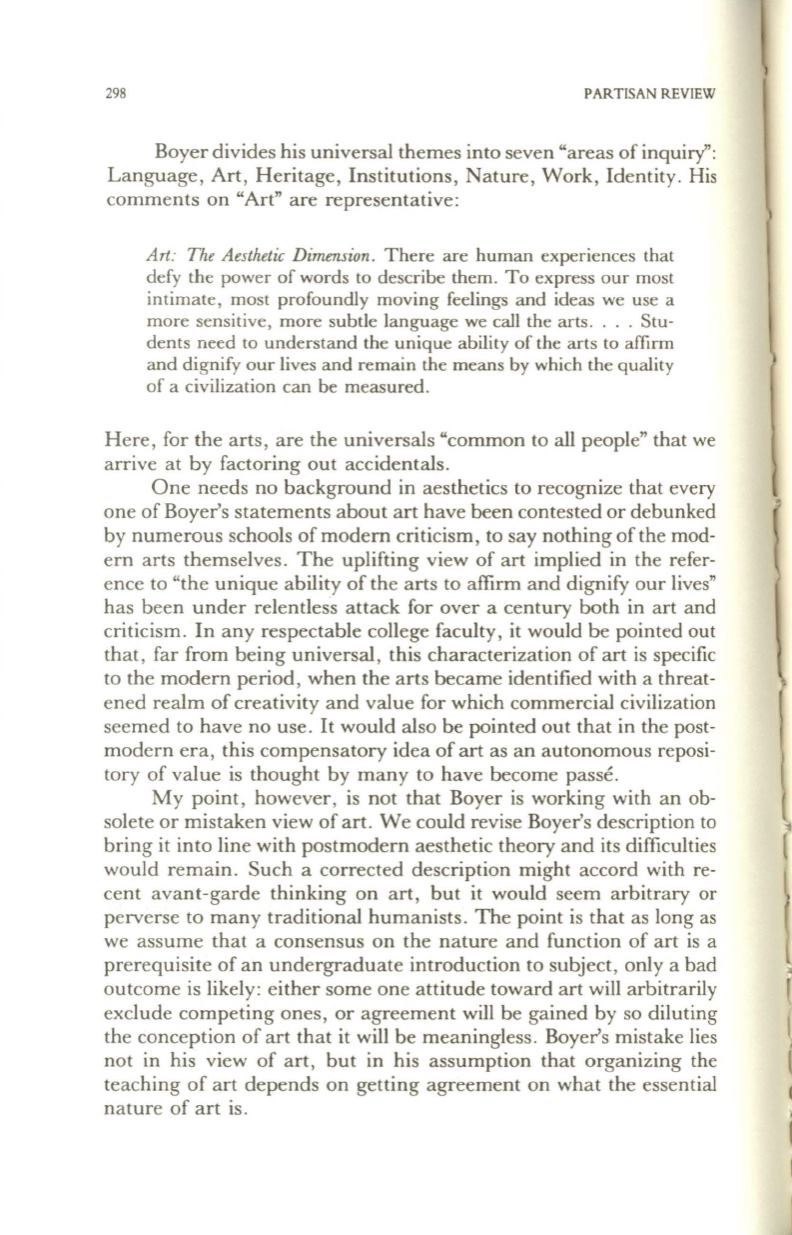
298
PARTISAN REVIEW
Boyer divides his universal themes into seven "areas of inquiry":
Language, Art, Heritage, Institutions, Nature, Work, Identity. His
comments on "Art" are representative:
Art: The Aesthetic Dimension .
There are human experiences that
defy the power of words to describe them. To express our most
intimate, most profoundly moving feelings and ideas we use a
more sensitive, more subtle language we call the arts.... Stu–
dents need to understand the unique ability of the arts to affirm
and dignify our lives and remain the means by which the quality
of a civilization can be measured .
Here, for the arts, are the universals "common to all people" that we
arrive at by factoring out accidentals.
One needs no background in aesthetics to recognize that every
one of Boyer's statements about art have been contested or debunked
by numerous schools of modern criticism, to say nothing of the mod–
ern arts themselves. The uplifting view of art implied in the refer–
ence to "the unique ability of the arts to affirm and dignify our lives"
has been under relentless attack for over a century both in art and
criticism. In any respectable college faculty, it would be pointed out
that, far from being universal, this characterization of art is specific
to the modern period, when the arts became identified with a threat–
ened realm of creativity and value for which commercial civilization
seemed to have no use. It would also be pointed out that in the post–
modern era, this compensatory idea of art as an autonomous reposi–
tory of value is thought by many to have become passe.
My point, however, is not that Boyer is working with an ob–
solete or mistaken view of art. We could revise Boyer's description to
bring it into line with postmodern aesthetic theory and its difficulties
would remain. Such a corrected description might accord with re–
cent avant-garde thinking on art, but it would seem arbitrary or
perverse to many traditional humanists. The point is that as long as
we assume that a consensus on the nature and function of art is a
prerequisite of an undergraduate introduction to subject, only a bad
outcome is likely: either some one attitude toward art will arbitrarily
exclude competing ones, or agreement will be gained by so diluting
the conception of art that it will be meaningless. Boyer's mistake lies
not in his view of art, but in his assumption that organizing the
teaching of art depends on getting agreement on what the essential
nature of art is.


